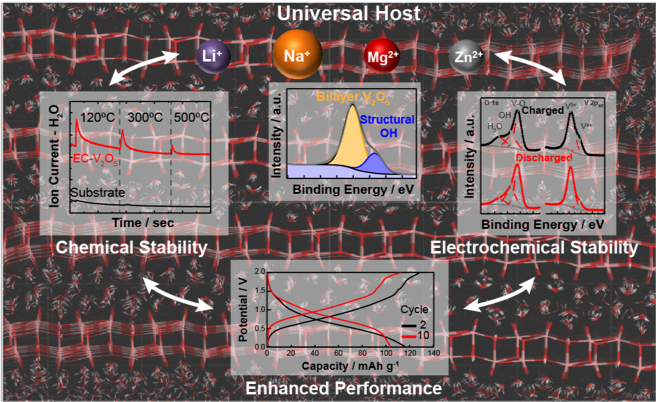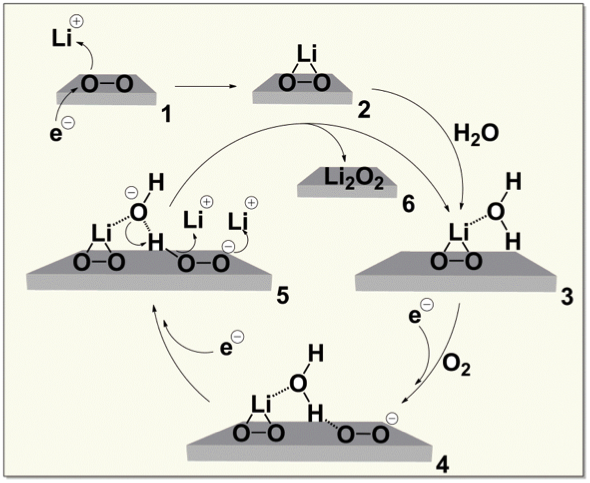Electrochemical Discovery Laboratory
-

Role of Structural Hydroxyl Groups in Enhancing Performance of Electrochemically-Synthesized Bilayer V2O5
Structural OH species, an intrinsic feature of electrochemically-synthesized V2O5 (EC-V2O5), are highly thermally and electrochemically stable and are responsible for the improved cycle life and reversible capacity of these materials for beyond-lithium-ion systems. Read More
-
The Electrochemical Discovery Laboratory
The Electrochemical Discovery Laboratory (EDL) — a key JCESR discovery tool located at Argonne — synthesizes high-quality materials for testing in beyond-lithium-ion batteries and characterizes their properties with state-of-the-art analytical techniques. Read More
-
Water as a Catalyst – Improving how Batteries Function
Anyone who has ever dropped a cell phone in the sink will tell you that electrical devices and water do not go together. However, a new study has shown that conventional wisdom may not hold on the molecular scale in some beyond-lithium-ion batteries. Read More
-

Trace Water Catalyzes Lithium Peroxide Electrochemistry
Water at ppm levels catalyzes the conversion of lithium superoxide (LiO2) to lithium peroxide (Li2O2) by the reaction cycle shown. Because water is not consumed in the cycle, trace amounts leverage large effects. Read More
-
EDL: Discovering Electrochemistry at Atomic and Molecular Levels
Established in situ Electrochemical Discovery Lab (EDL) for systematic studies of wet and dry interfaces for materials-by-design and electrolytes-by-design at atomic and molecular levels Read More
Latest Updates
-
You’re Invited - JCESR and Beyond: Translating the Basic Science of Batteries
Please join us at Argonne National Laboratory on Tuesday, April 4, 2023 for JCESR and Beyond: Translating the Basic Science of Batteries. Registration is now open. This in-person event will celebrate 10 years of research from the Joint Center… Read More
-
A Message from JCESR: In Memory of George Crabtree
It is with heavy hearts that we say goodbye to George Crabtree, a Senior Scientist and Distinguished Fellow at Argonne National Laboratory, and Director of the Joint Center for Energy Storage Research (JCESR), who passed away unexpectedly on January 23. Dr. Read More
-
Cyanopyridines As Extremely Low-Reduction-Potential Anolytes for Nonaqueous Redox Flow Batteries
Discovery of a cyanophenylpyridine derivative with a very low reduction potential and good stability during cycling. Read More
-
Characterizing Redoxmer – Electrode Kinetics Using a SECM-Based Spot Analysis Method
Identified asymmetries in electron transfer (ET) kinetics between the reduction and oxidation of ferrocene-based redoxmers by measuring the ET rate constants (kf/kb) as a function of electrode potential. Read More
-
Benzotriazoles as Low Potential Anolytes for Non-Aqueous Redox Flow Batteries
We developed an easy-to-synthesize benzotriazole-based anolyte with a high energy redox potential (-2.3 V vs Fc/Fc+) and high solubility that demonstrates stable electrochemical cycling performance. Read More

